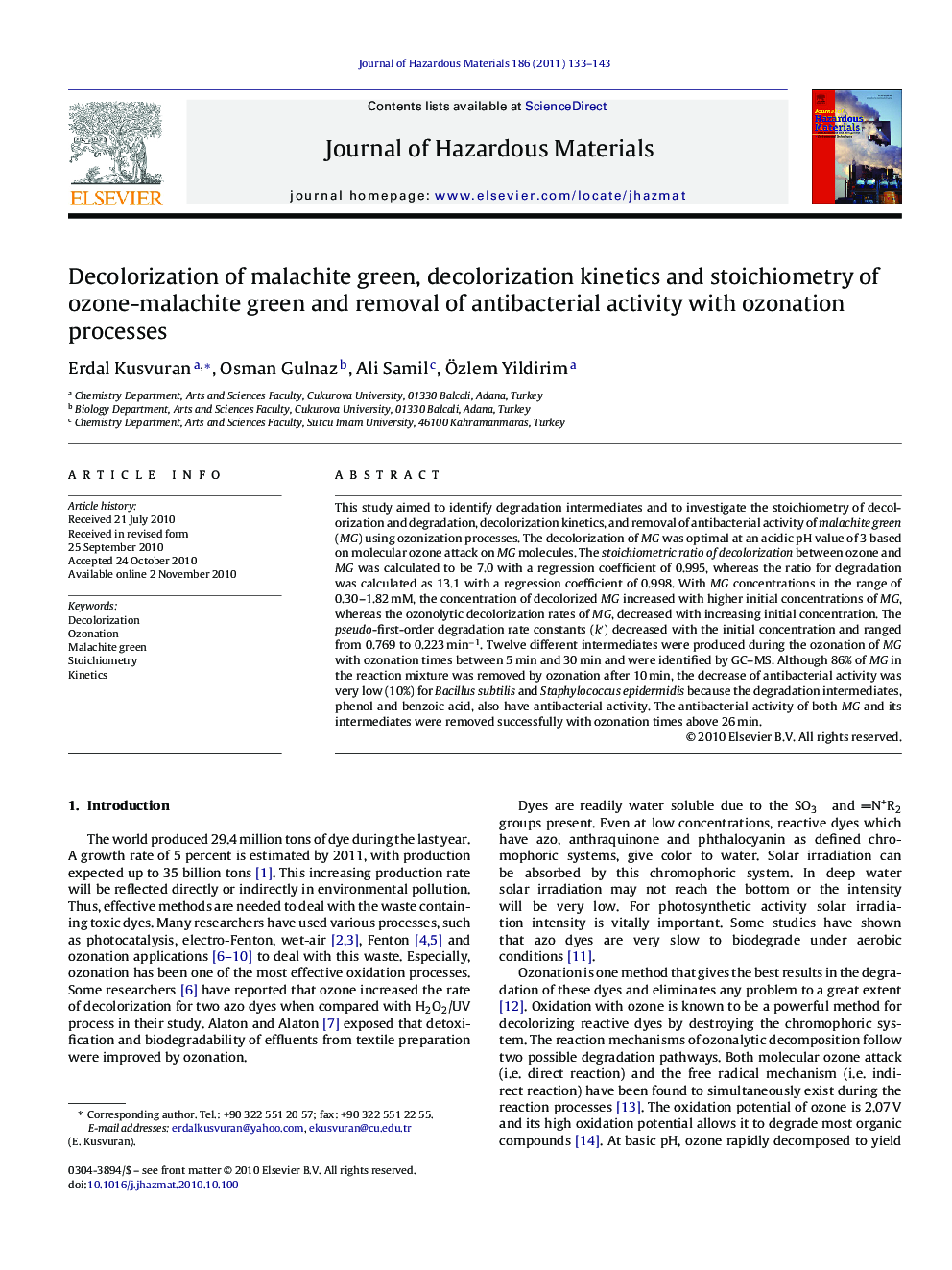| Article ID | Journal | Published Year | Pages | File Type |
|---|---|---|---|---|
| 10372706 | Journal of Hazardous Materials | 2011 | 11 Pages |
Abstract
This study aimed to identify degradation intermediates and to investigate the stoichiometry of decolorization and degradation, decolorization kinetics, and removal of antibacterial activity of malachite green (MG) using ozonization processes. The decolorization of MG was optimal at an acidic pH value of 3 based on molecular ozone attack on MG molecules. The stoichiometric ratio of decolorization between ozone and MG was calculated to be 7.0 with a regression coefficient of 0.995, whereas the ratio for degradation was calculated as 13.1 with a regression coefficient of 0.998. With MG concentrations in the range of 0.30-1.82Â mM, the concentration of decolorized MG increased with higher initial concentrations of MG, whereas the ozonolytic decolorization rates of MG, decreased with increasing initial concentration. The pseudo-first-order degradation rate constants (kâ²) decreased with the initial concentration and ranged from 0.769 to 0.223Â minâ1. Twelve different intermediates were produced during the ozonation of MG with ozonation times between 5Â min and 30Â min and were identified by GC-MS. Although 86% of MG in the reaction mixture was removed by ozonation after 10Â min, the decrease of antibacterial activity was very low (10%) for Bacillus subtilis and Staphylococcus epidermidis because the degradation intermediates, phenol and benzoic acid, also have antibacterial activity. The antibacterial activity of both MG and its intermediates were removed successfully with ozonation times above 26Â min.
Related Topics
Physical Sciences and Engineering
Chemical Engineering
Chemical Health and Safety
Authors
Erdal Kusvuran, Osman Gulnaz, Ali Samil, Ãzlem Yildirim,
